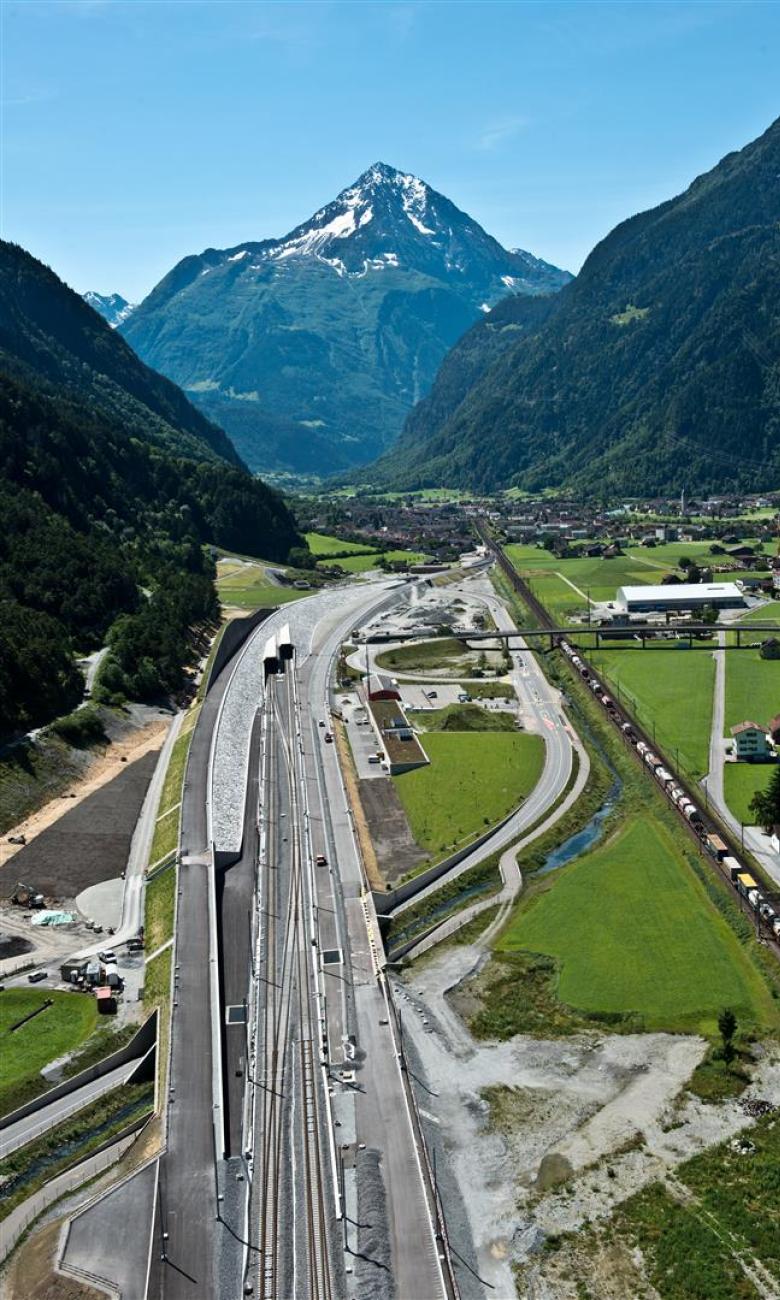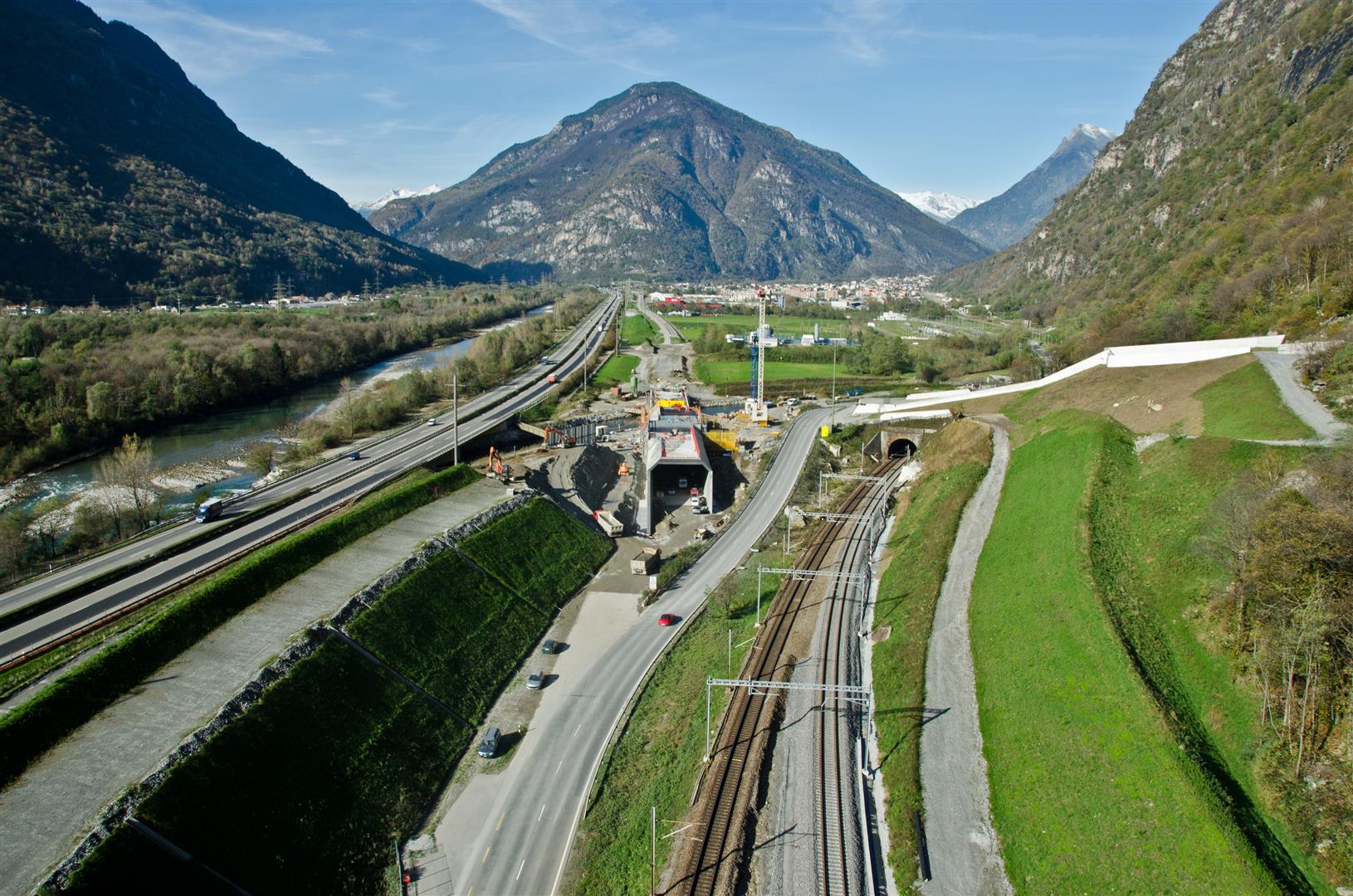The construction of the world’s longest environmentally friendly tunnel
With UNESCO World Heritage sites, nature reserves, an arboretum and a highly active Swiss league for nature protection, wildlife conservation is of concern to the Swiss. The plans for the Gotthard Base Tunnel were drawn up with this in mind. 152 kilometers of shafts and passages were excavated with minimal environmental damage.
Green thinking today for a greener future
In February 1994, aware of the challenges facing their wildlife, the Swiss adopted the Alpine Initiative, which aims to protect the Alpine regions from road traffic. The New Rail Link through the Alps (NRLA) is the core focus of Swiss transport policy and consists in shifting heavy goods vehicle traffic from road to rail, as proposed in the Alpine Initiative. The Gotthard Base Tunnel is the cornerstone of the NRLA. With this tunnel, Switzerland will lead by example. The country can claim the world’s longest tunnel (57.1 kilometres) as well as simultaneously having started one of Europe’s largest environmentally friendly projects.

Switzerland will lead by example
To ensure the success of this project, which aims to protect the Alps from road traffic, the construction site needs to be as environmentally friendly as possible. Enter Alex Regli, the Environment and Planning officer at AlpTransit Gotthard SA. He is proud of this project and talks enthusiastically about the measures that were implemented to protect people and wildlife during this large-scale operation. These include:
- Eco-friendly transport to protect air quality
To protect air quality and keep pollution to a minimum, materials were sent to the construction sites by rail and/or sea. Site vehicles and machinery were equipped with particle filters.
- Waste water treatment
Waste water polluted by the construction work was treated and cooled following clearly defined legal requirements before being released into rivers and streams.
- Protection against site dust and noise
The communities living near the construction site were considered and several measures were put in place to protect the population’s lungs and eardrums from the dust and noise.
Humus and topsoil were piled up and used to build anti-noise barriers. The site areas and temporary landfills were sprayed regularly and vehicles were washed frequently to ensure they did not create too much dust.

- Protecting the wildlife
Building an infrastructure such as this invariably has an effect on the wildlife. Therefore, for wildlife to continue to thrive, the ecosystem is restored once the work is completed. If this is not possible, for example if the affected area is directly on the tunnel’s route, other steps are taken to offset the impact:
- managing the chestnut forest at the tunnel’s southern entrance;
- returning banks to their natural state;
- restoring streams;
- rebuilding dry-stone walls that provide a habitat for reptiles, lizards, slow worms and other small animals.
Ultimately, the inevitable impact that the construction work has had on the environment was tackled successfully. The restoration process is already well under way and at the tunnel’s north and south entrances it is difficult to imagine that this was once the site of nearly 20 years of excavation work, explosions and concrete pouring. They’ve been true to their word.
More stories about the Gotthard :
→ The legend of the Gotthard pass
→ The construction of the world's longest environmentally friendly tunnel
→ When rock from the Gotthard Base Tunnel heads to the beach
→ The Gotthard Tunnel: a women's story
→ Across the Gotthard on foot and by train
For more information : Swiss Travel System






